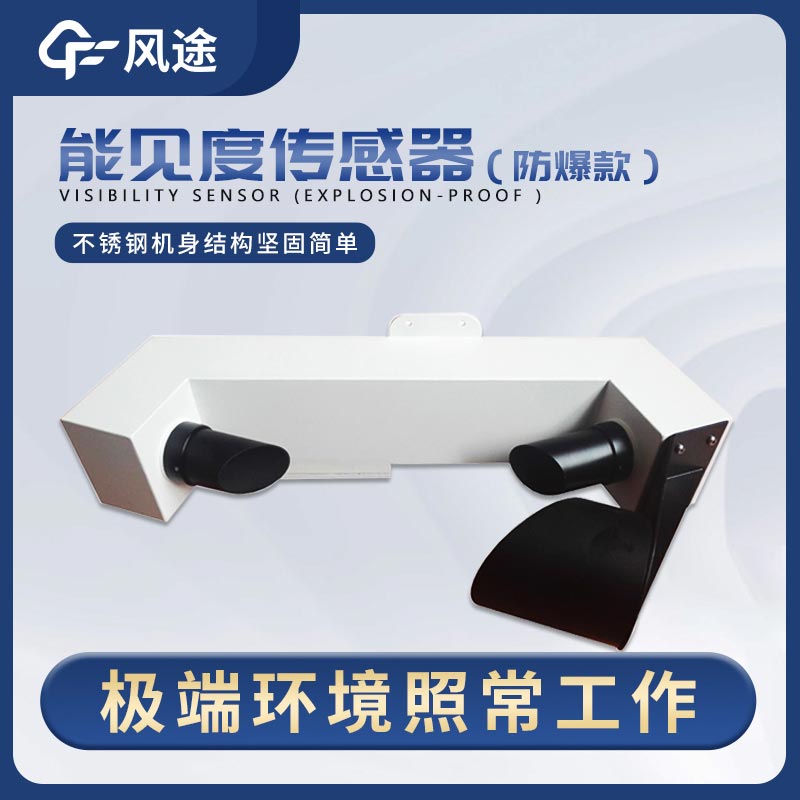Shandong Fengtu IOT Technology Co., Ltd
Sales Manager:Ms. Emily Wang
Cel,Whatsapp,Wechat:+86 15898932201
Email:info@fengtutec.com
Add:No. 155 Optoelectronic Industry Accelerator, Gaoxin District, Weifang, Shandong, China

Sales Manager:Ms. Emily Wang
Cel,Whatsapp,Wechat:+86 15898932201
Email:info@fengtutec.com
Add:No. 155 Optoelectronic Industry Accelerator, Gaoxin District, Weifang, Shandong, China
time:2024-09-23 16:35:24 source:Weather Station viewed:437 time
For a long time, visibility observation has often relied on manual visual estimation, which is subjective and has a large margin of error. With the rapid advancement of photoelectric instruments, manual estimation has gradually been replaced by Visibility meters that can operate around the clock. Currently, the widely used Visibility meters are mainly divided into two categories based on their measurement principles: transmissive and scatter.
Transmissive Visibility Meter Based on the principle of direct attenuation of light as it propagates through the atmosphere, considering absorption, reflection, and scattering of light in the atmosphere as attenuation phenomena. A gas column with a thickness equal to the "baseline" length is taken as the research sample. By measuring the average extinction (transmission) ratio of this baseline gas column, the atmospheric visibility and smoke concentration can be accurately determined.
Advantages:
High measurement accuracy, directly detects atmospheric transmittance or extinction coefficient, resulting in accurate outcomes.
Large sampling volume, can obtain atmospheric data from a wider area, strong representativeness.
Strong received signal, performs well in low visibility conditions.
Disadvantages:
Large footprint, to ensure accuracy and measurement range, the distance between the light source and the receiver cannot be short, leading to a large footprint.
Large equipment size, the light source power cannot be small, making the equipment inconvenient to move and install.
The optical system is expensive and difficult to align, with a long distance between the transmitter and receiver, calibration is difficult, and measurement errors are prone.
Sensitive to light source pollution, external contamination affects measurement accuracy.
In low visibility meteorological conditions such as rain and fog, water vapor absorption can lead to significant errors.
Scatter Visibility Meter The instrument's emission end irradiates atmospheric light radiation, and aerosol particles scatter the light. By measuring the intensity of scattered light at a specific angle, the total scattering coefficient can be determined. Since the absorption coefficient is small, visibility can be calculated.
Advantages:
Easy to install, simple structure, and convenient installation process.
Compact structure and small size, easy to carry and install, suitable for various environments.
Low cost, the manufacturing cost is lower than that of transmissive visibility meters.
Disadvantages:
Small sampling space, slightly less representative, measurement results may not fully represent the visibility of the entire atmospheric environment.
Difficult to calibrate, the calculation formula is complex, and data processing is challenging.
Low reliability under low visibility conditions, sensitive to the size of scattering particles, and multiple scattering effects affect the reliability of detection. The measurement accuracy, reliability, and stability are much lower than those of transmissive instruments.
At present, no single Visibility meter can meet all users' needs. Forward scatter meters are widely used in the meteorological field and some transportation departments due to their convenient installation and debugging, low cost, and small error in test data compared to actual conditions under high visibility. Although transmissive meters have a limited effective measurement range, their measurement accuracy for low visibility is higher than that of scatter instruments and can meet general requirements. However, due to their high price, they are usually used in fields that require extremely high precision, such as meteorology, aviation, and high-speed transportation.

temperature and humidity monitoring Monitor the relative humidity and temperature of indoor or outdoor air to provide accurate data for various applications....
Villa weather station monitoring equipment is a kind of monitoring instrument used to monitor temperature and humidity, wind speed and direction, air pressure, PM2.5, PM10 and other weather environment parameters of the villa. Its structure includes: sensor module, communication transmission module,...
The Duct Air Velocity Tester is a handheld device designed to measure duct air velocity data. It features a fixed impeller air velocity probe with a telescopic handle that is flexible and retractable. The handle has a maximum length of up to 890mm and the impeller probe has a diameter of 16mm, makin...
Strawberries are fruits in spring, but with the development of greenhouse technology, we can now also eat strawberries in winter. Winter strawberries are harvested from greenhouses because they have meteorological requirements. Therefore, we can create an environment suitable for strawberry growth i...